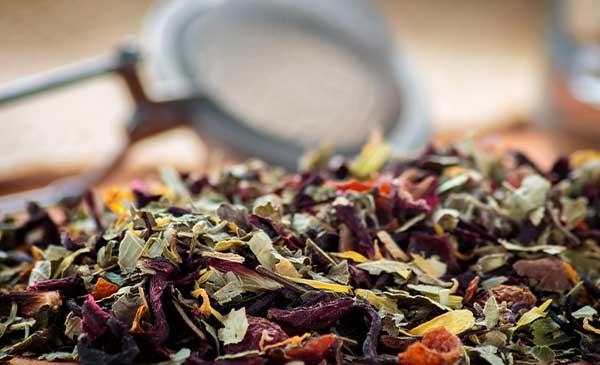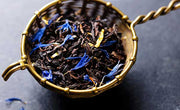What Is a Tisane? Understanding How it Differs from Tea

When most people hear the word “tea,” they likely picture a steaming cup of black, green, or maybe even oolong tea. But there’s another soothing beverage that often gets lumped into the same category. Although frequently referred to as “herbal tea,” a tisane is technically not a tea at all. So, what exactly is it, how does it differ from tea, and are all herbal teas considered tisanes?
Let’s steep ourselves in the facts.

What Is Tisane Tea?
A common tisane (pronounced tee-zahn) is an infusion made from herbs, spices, flowers, fruits, or other plant materials. Unlike traditional or "true" teas, these infusions do not come from the tea plant, Camellia sinensis.
In other words, your favorite cup of chamomile, peppermint, hibiscus, or rooibos isn’t technically a leaf tea. It’s a tisane.
The word “tisane” has roots in ancient Greek (ptisánē, meaning crushed barley), but the modern French term refers broadly to herbal infusions. People of all cultures have consumed tisanes for centuries for enjoyment and medicinal purposes.
Tea vs. Tisane: What’s the Difference?
The key difference between the two lies in the source plant.
Tea:
- Made from the Camellia sinensis plant.
- Includes varieties like black tea, green, white, oolong, and pu-erh.
- Contains caffeine (although levels vary depending on the type).
- Offers antioxidants such as catechins and theanine.
Tisane:
- Made from anything other than the Camellia sinensis plant.
- Can include herbs (e.g., peppermint), flowers (e.g., chamomile), seeds and spices (e.g., cinnamon), fruits (e.g., orange peel), and roots (e.g., ginger).
- Typically caffeine-free (but not always!)
- Often consumed for relaxation, digestion, or specific wellness benefits.
So, while all teas are infusions, not all infusions are teas.

Are All Herbal Teas Considered Tisanes?
In everyday conversation, the terms “herbal tea” and “tisane” are used interchangeably — and for good reason.
Here’s the nuance:
- If a beverage is made by steeping herbs, flowers, or spices in hot water without any tea leaves from the Camellia sinensis plant, it qualifies.
- But not all herb-infused beverages are strictly “herbal”: Some blends combine herbs with true tea (e.g., green tea with peppermint). They’re herbal in nature, but to be true, the infusion must not contain tea leaves from the tea plant.
Types of Tisanes
Tisanes are available in many varieties, each with its own flavor and benefits:
- Herbal: Peppermint, lemon balm, sage, rosemary
- Floral: Chamomile, hibiscus, lavender, rose
- Spiced: Cinnamon, clove, ginger, cardamom
- Fruity: Dried apple, citrus peel, berry blends
- Root-based: Licorice root, turmeric, dandelion root
Many people turn to specific blends for their various health benefits. It is well know that chamomile is good for sleep, peppermint for digestion, or ginger for nausea, for example.

How to Steep a Tisane
Steeping is a simple process, but there are a few key steps to ensure you get the best flavor and benefits from your herbs. Here’s how to do it:
1. Select the type of tisane. A general guideline is to use about one teaspoon per cup of water.
2. Bring fresh, filtered water to a boil. The temperature of the water can vary depending on the type of tisane. For most herbal tisanes, boiling water is ideal, while flower tisanes may require slightly cooler water.
3. Place your chosen herbs in a tea infuser or a fine mesh strainer.
4. Pour the hot water over the herbs and cover the pot or cup. Allow it to steep for about 5 to 10 minutes, depending on your taste preference. The longer you steep, the stronger the flavor will be.
5. Enjoy your infusion. Add a touch of lemon if desired.
Final Thoughts
Experimenting with different combinations of herbs can lead to delightful discoveries. Whether you’re looking for a caffeine-free cup of tea or exploring plant-based wellness, tisanes offer a flavorful and versatile alternative to traditional teas.
Tisanes are a world of their own — diverse in ingredients, effects, and taste. Sip on with the confidence that you now know the difference.






